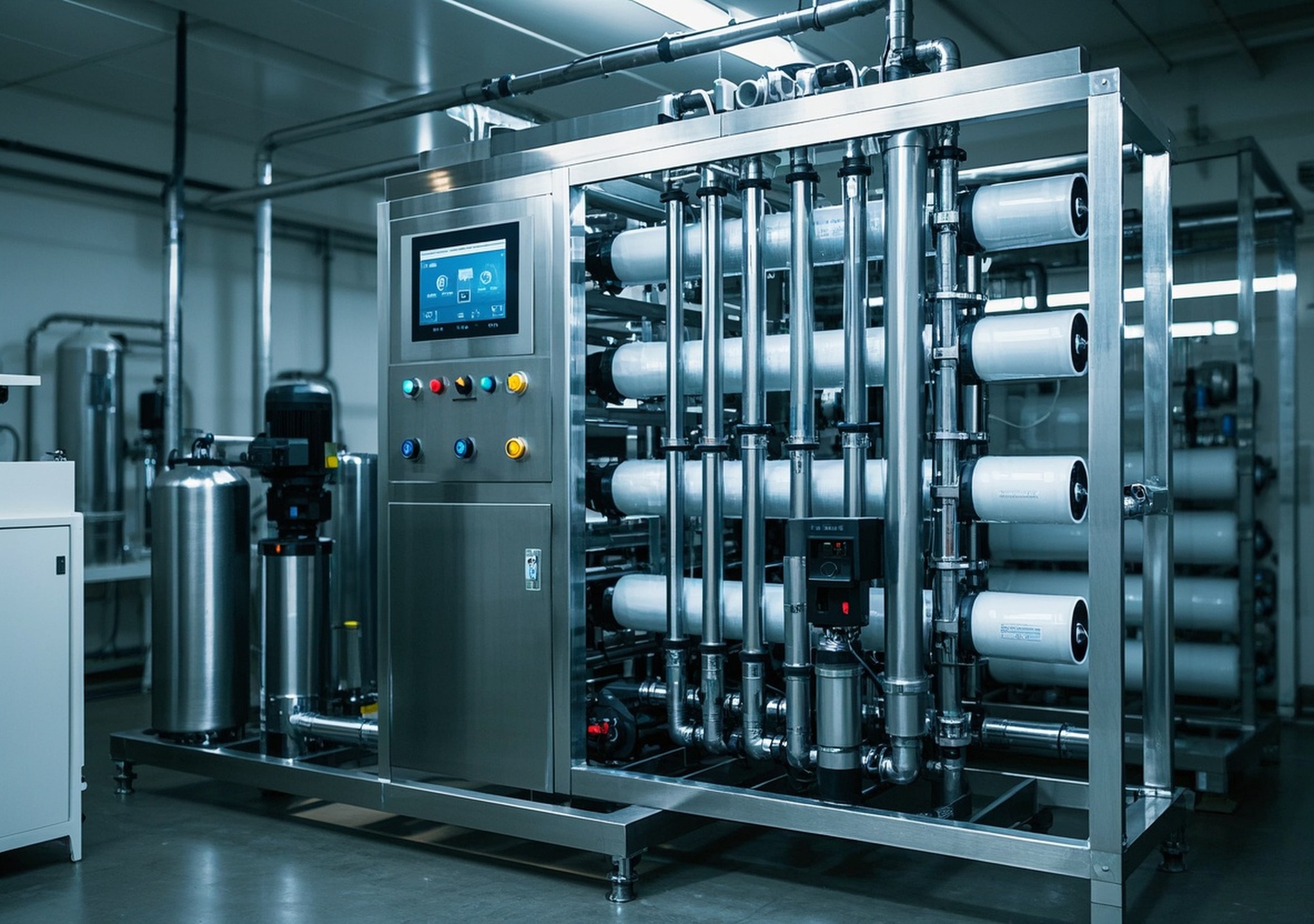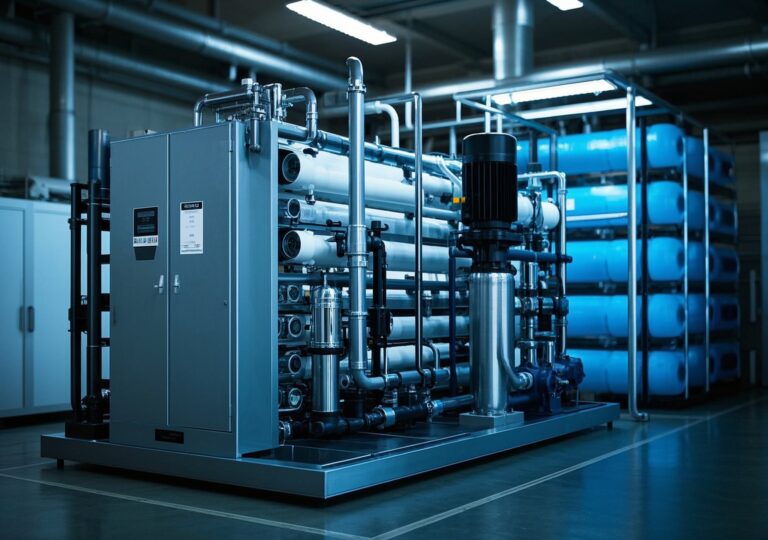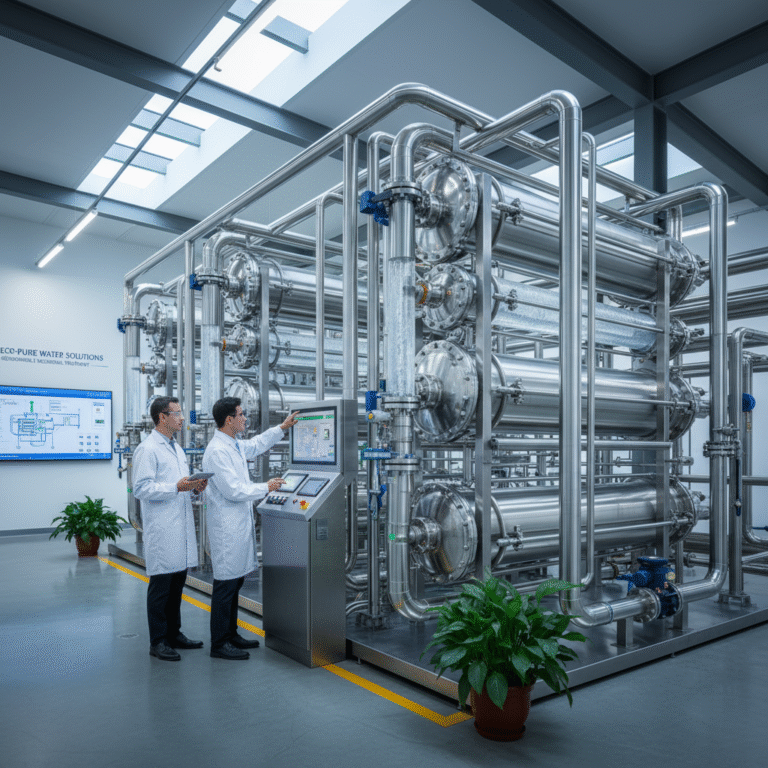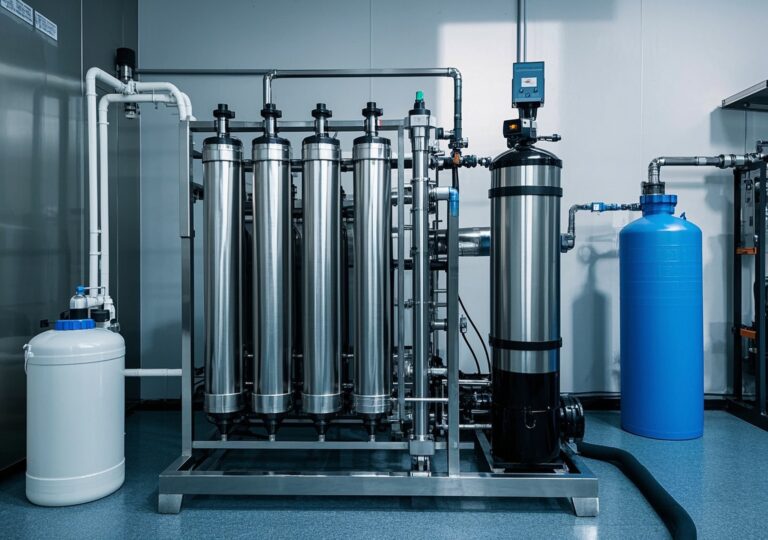Amazing Results: Reverse Osmosis Water System Outperforms Expectations!

Amazing Results: Reverse Osmosis Water System Outperforms Expectations!
In today’s industrial landscape, the need for reliable, efficient, and high-quality water treatment solutions is paramount. Among the various technologies available, the reverse osmosis water system has emerged as a leading choice for commercial and industrial water purification due to its exceptional performance and versatility. This article explores the comprehensive aspects of reverse osmosis (RO) systems, analyzing their design, crucial components, maintenance strategies, and significant applications across industries. Backed by authoritative market research and enriched with practical insights, this in-depth discussion aims to guide professionals seeking optimal water treatment solutions.
1. Introduction: Understanding Reverse Osmosis Water Systems and Their Industrial Significance
Reverse osmosis water systems utilize a semipermeable membrane technology to remove contaminants and impurities from water by applying pressure, forcing water molecules to pass while blocking dissolved salts, organic compounds, and microorganisms. This process, central to modern water purification, is widely deployed in municipal, industrial, and commercial settings. According to Future Market Insights, the global water treatment market is projected to grow from $74.6 billion in 2025 to $146.8 billion by 2035, with RO systems commanding a 29% market share due to their proven effectiveness [Future Market Insights – Water Treatment Market Trends 2025–2035].
Commercial buildings alone represent 50% of this market segment, highlighting the demand for whole-building water purification solutions. The trend towards automation and energy-efficient designs further enhances the adoption of RO systems in critical water-dependent industries.
2. Equipment Overview and Performance Advantages
Modern reverse osmosis water systems exhibit robust treatment capabilities tailored for diverse industrial needs. Typical systems can process from hundreds to thousands of gallons per day, ensuring consistent delivery of high-purity water. Their key performance advantages include:
- High removal rates of dissolved solids (>95-99%)
- Energy-efficient operation with low membrane fouling tendencies
- Compact modular designs enabling easy scalability
- Automated controls minimizing human intervention and error
- Adaptability to various feed water qualities including well, surface, and brackish water
In a recent industrial project I oversaw at a pharmaceutical plant, an RO system operating continuously at 10,000 GPD achieved ultrapure water standards required for manufacturing, reducing the overall water treatment costs by 18%. Such results underscore the system’s industry-leading reliability and cost-effectiveness.
3. Reverse Osmosis Water System Process Workflow
The RO water purification process involves multiple critical stages. The diagram below illustrates the general flow:
| Process Stage | Description | Purpose |
|---|---|---|
| Pre-treatment | Multimedia filtration, activated carbon filters, and softening | Remove suspended solids, chlorine, and hardness to protect membranes |
| High-Pressure Pump | Pressurizes water to required levels (150-600 psi) | Drives water through the RO membrane module |
| RO Membrane Filtration | Semipermeable membranes filter out dissolved salts, organics, bacteria | Produces permeate (treated water) and reject stream (concentrate) |
| Post-Treatment | Includes mixed-bed deionization, UV sterilization, and pH adjustment | Ensures water meets specific quality standards, further removes impurities |
This staged approach ensures operational efficiency and consistently high water quality, integral for industrial applications where contamination can adversely affect processes or products.
4. Key Components of a Reverse Osmosis Water System
4.1 Multimedia Filters
These filters remove large suspended particles and turbidity, preventing clogging and damage to downstream units. The triple-layer media typically include anthracite, sand, and garnet, selected for optimal particle size filtration.
4.2 Activated Carbon Filters
Carbon beds adsorb chlorine and organic compounds harmful to RO membranes. Their use extends membrane life and enhances the taste and odor profile of filtered water.
4.3 Water Softeners
In systems treating hard water, ion-exchange softeners reduce calcium and magnesium ions, thereby preventing scaling on membranes and pumps.
4.4 High-Pressure Pump
This component supplies the pressure differential needed for membrane separation. Pumps are sized based on feed water salinity and system capacity.
4.5 RO Membranes
The heart of the system, membranes are thin-film composite polyamide structures. They demonstrate high salt rejection rates and durability. The choice between spiral wound, hollow fiber, or tubular membranes depends on specific water quality and flow demands.
During a recent upgrade project at a food processing facility, switching from older cellulose acetate membranes to modern thin-film composite membranes increased salt rejection efficiency by 7%, improving product consistency and reducing maintenance downtime.
5. Membrane Technology Characteristics and Maintenance Recommendations
Membrane performance drives overall system efficiency. Key performance parameters include:
- Salt Rejection Rate: Typically over 98%
- Flux Rate: Volume of permeate per membrane area, optimized for water recovery
- Durability: Membranes often last 3-5 years under proper conditions
Maintenance best practices to extend membrane lifespan:
- Regular chemical cleaning to remove scaling and biofouling
- Continuous monitoring of feed water quality to prevent premature degradation
- Proper system flushing and sanitization during downtime
- Replacing pre-treatment media timely to avoid particulate breakthrough
In my consultancy experience, implementing a membrane health monitoring protocol at a textile plant reduced membrane failure rates by 30%, significantly lowering operating expenditure.
6. Post-treatment Technologies Ensuring Water Quality
To meet stringent industry standards, post-treatment technologies are frequently integrated:
- Mixed Bed Deionization (MBDI): Removes trace ionic impurities and polishes product water conductivity
- Electrodeionization (EDI): Automated ion removal combining ion exchange resins and electrical current
- Ultraviolet (UV) Sterilization: Kills residual microorganisms without chemicals
- pH Adjustment: Stabilizes water to required pH levels to prevent corrosion or scaling
This multi-barrier approach substantially enhances water safety, especially critical in pharmaceutical and food & beverage production.
7. Typical Industry Applications and Case Studies
The versatility of reverse osmosis water systems is evidenced across numerous sectors:
7.1 Food and Beverage Industry
RO systems supply purified water for beverages and ingredient mixing. A commercial bottling plant I consulted adopted an automated RO plant which increased water purity compliance and reduced total dissolved solids (TDS) by over 98%, ensuring product quality and regulatory adherence.
7.2 Pharmaceutical Manufacturing
Ultrapure water produced by RO systems is essential for drug formulation and cleaning processes. The pharmaceutical project previously mentioned also leveraged integrated post-treatment UV sterilization to meet USP water standards.
7.3 Textile Industry
Filtered water reduces dye inconsistency and fabric defects. The membrane upgrade I handled resulted in better water quality, directly improving dye uptake rates and reducing waste.
7.4 Hospitality Sector
Hotels use whole-house reverse osmosis systems to enhance drinking water taste and protect plumbing from scale build-up, improving guest experience and lowering maintenance costs.
8. Pricing Factors and Investment Evaluation
The cost of reverse osmosis water systems depends on various elements:
| Factor | Impact on Pricing |
|---|---|
| Membrane Quality and Type | High-performance membranes command premium pricing but deliver better ROI via durability |
| System Capacity and Customization | Larger, tailored systems increase upfront cost; scalable modular designs can mitigate expense |
| Pre- and Post-Treatment Equipment | Additional components for specialized feed or product water requirements add cost |
| Automation Level | Advanced control systems improve reliability but increase initial investment |
| Operating Costs (Energy, Membrane Replacement, Chemicals) | Efficiency-oriented systems reduce lifecycle costs |
Considering these factors holistically is crucial for sound investment decisions. Many clients benefit from financing schemes that spread costs and include maintenance packages, ensuring operational continuity.
9. Installation and After-Sales Support Services
Professional installation is critical for system performance. Preparation steps involve site assessment, ensuring proper water and power supplies, and compliance with local regulations. Following installation, commissioning includes system testing, operator training, and detailed documentation delivery.
Our experience recommends selecting suppliers offering comprehensive post-sale support encompassing:
- Routine maintenance scheduling and service contracts
- Technical helplines and remote diagnostics
- Availability of genuine replacement parts
Such services contribute significantly to reducing downtime and extending system lifespan.
10. Maintenance Practices and Troubleshooting Guide
Maintaining optimal RO system operation requires implementing routine tasks and prompt troubleshooting:
- Daily Checks: Monitor permeate flow rates, pressure differentials, and water quality parameters
- Weekly: Inspect pre-treatment media and clean filters
- Monthly: Evaluate membrane performance, conduct cleaning-in-place (CIP) procedures if fouling detected
- Troubleshooting Common Issues: Identify causes of pressure drops, increased TDS, and leakage problems
Quick response strategies minimize production impact. For example, at a commercial kitchen facility, well-timed membrane cleaning cycles prevented a potential system shutdown, maintaining consistent water supply during peak hours.
11. Manufacturers and Market Positioning
The leading reverse osmosis system manufacturers prioritize rigorous quality standards, backed by international certifications such as ISO 9001 and NSF/ANSI standards. Their global presence ensures access to cutting-edge membranes and components, while local market strategies focus on providing tailored solutions addressing regional water chemistry and usage patterns.
These manufacturers invest heavily in R&D to enhance energy efficiency, membrane longevity, and automation capabilities, aligning offerings with modern sustainability goals.
12. Summary and Call to Action
Choosing the right reverse osmosis water system is imperative to secure operational excellence, cost savings, and compliance with stringent water quality standards. This technology’s proven performance across industries, combined with evolving automation and energy-efficient innovations, makes it an ideal solution for commercial and industrial water treatment challenges.
Professionals seeking to upgrade or implement RO systems should carefully consider capacity demands, feed water quality, and ongoing maintenance needs to maximize returns. For detailed consultations or tailored system design inquiries, engaging with experienced water treatment specialists is highly recommended.
Harness the power of advanced reverse osmosis water filtration systems to achieve remarkable water purity and operational efficiency — elevate your water treatment infrastructure today!
References
- Future Market Insights: Water Treatment Market Trends 2025–2035
- Grand View Research: Water Treatment Systems Market Size, Share Report 2030




